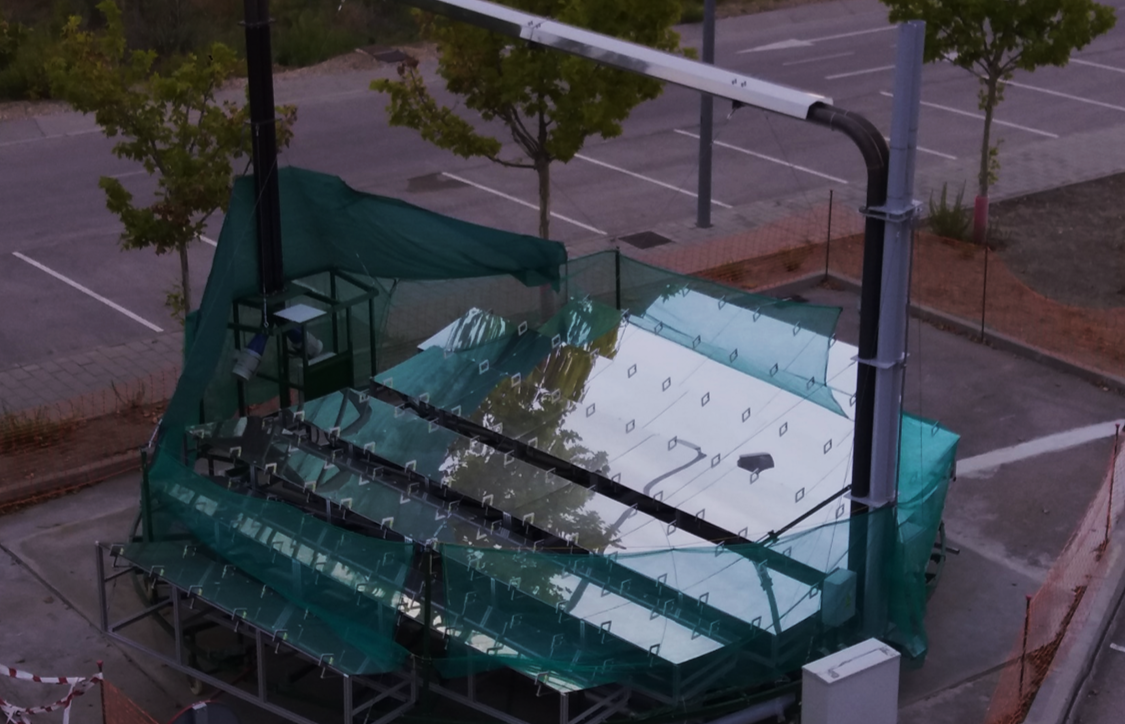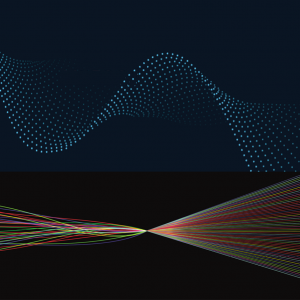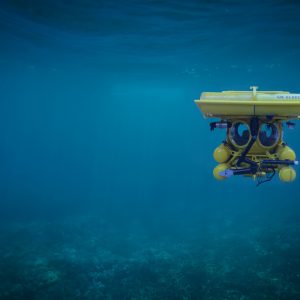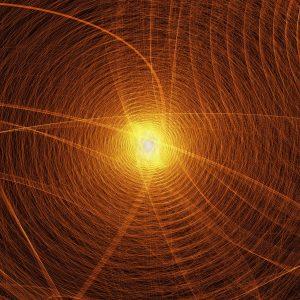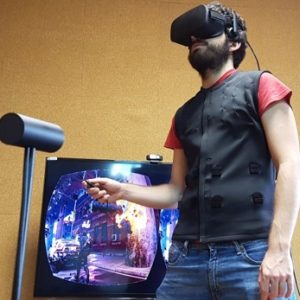Brief description of the technology solution and the added value it provides
The cost of concentrating solar power devices is more than 50% of the total cost in technologies using such concentration one to heat strongly a fluid and generate electricity through a thermodynamic cycle. Reloj de Sol is an alternative to conventional concentrators in order to reduce this cost. The peculiar geometry that defines Reloj de Sol manages to minimize the weight of the material elements (steel, mirrors, etc.) that is required to concentrate the radiation, without lowering concentration performance. This means an investment cost per kW which can be reduced to one third of current commercial technologies cost.
Description of the technological base
Reloj de Sol is a solar radiation concentrator with a configuration of longitudinal cylindrical mirrors, with the same focal axis, that is fixed in a platform that rotates horizontally as the pointer shadow in a sundial.
All solar radiation concentrators that use moving mirrors to focus the radiation involve the use of high material weights, to make the structure more rigid. Reloj de Sol needs about 20 kg of flat and cheap mirror (that deforms in the assembly), 15 kg of steel and 30 kg of concrete to capture a 1 kW thermal power in the heating fluid; compared with 30kg of tempered and curved mirror; 50kg of steel and 100kg of concrete, which requires a conventional assembly. Reloj de Sol manages to reduce the cost by 65% because of this material decrease.
This configuration is related to the so-called Fresnel Reflection assemblies, but with features that are not common to that family.
“Reloj de Sol configuration can reduce the concentrator field cost to 1/3 compared to current commercial technologies by reducing weight and simplifying assembly”
Market demands
- The incompatibility of the current pattern of electricity consumption with the fight against climate change and the growing demand for electricity means that the electricity production using renewable technologies is expected to increase by several orders of magnitude.
- Although wind energy has been the first of the three major renewables to undergo significant deployment, and photovoltaic one is currently in an expansive phase, none of them has solved the energy storage problem and, therefore, the manageability one.
- On the contrary, the heat collected by surplus solar thermal energy can be stored to be used later, to satisfy the electrical demand according to needs.
- In addition to this, solar thermal energy allows frequency regulation, voltage and power, due to its thermal inertia.
- It is essential a reduction of solar thermal energy costs in order to become competitive, where the main target is the solar tracker/concentrator, since it represents more than 50% of the total cost; it also offers very promising innovation areas and alternatives.
“The wind energy grew from being non-existent to have more than 25 GW of installed capacity during the past 25 years in Spain. Over the next 25 ones, similar increases must be expected with solar thermal energy with the closing of coal and nuclear plants”
Competitive advantages
- Costs reduction to 1/3 of the present value, in the solar radiation concentration elements.
- Easy construction, modular, repetitive, parallel development.
- Easily connectable to Thermal Storage (energy manageability).
- Easy demonstration of costs and benefits at the prototype level.
- Less dependent on the few suppliers that dominate the high-temperature solar thermal sector.
- Polyvalent in working fluids (optimization in progress).
Previous references
- The Thermo-Energetic research group has a previous project as a reference: the “Future Solar” Project with OHL company (2015).
Intellectual property
- Patents granted in Spain ES2537607, ES1138715 U
- Patents applied in Spain P201630832, P201630836
Development stage
- Concept
- R&D
- Lab Prototype
- Industrial Prototype
- Production
Contact
Reloj de Sol
José Mª Martínez-Val Peñalosa
Grupo de Investigaciones Termoenergéticas (GIT)
e:
Contacto UPM
Área de Innovación, Comercialización y Creación de Empresas
Centro de Apoyo a la Innovación Tecnológica – UPM
e:



